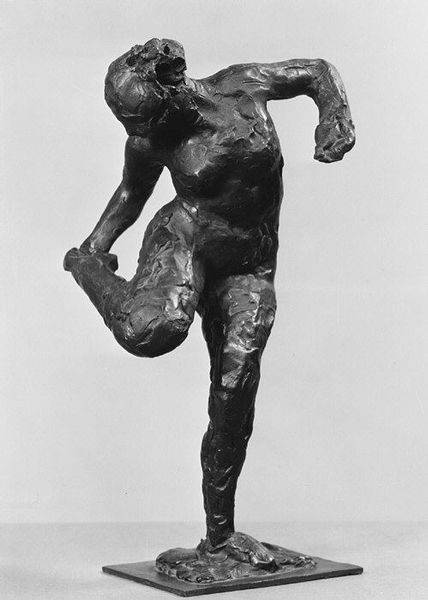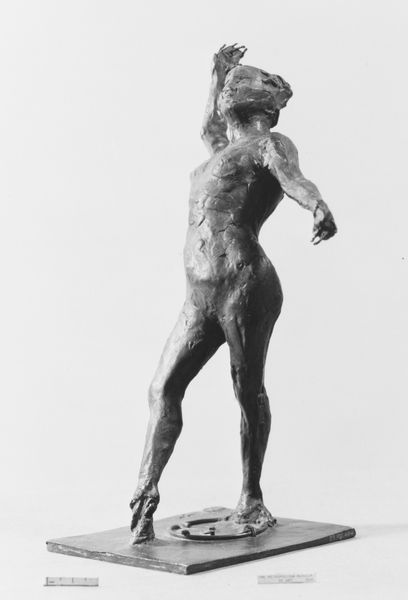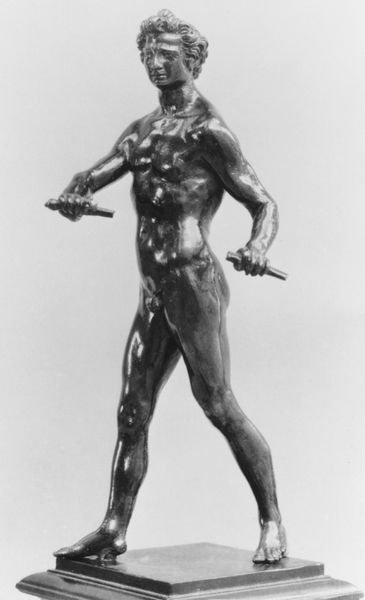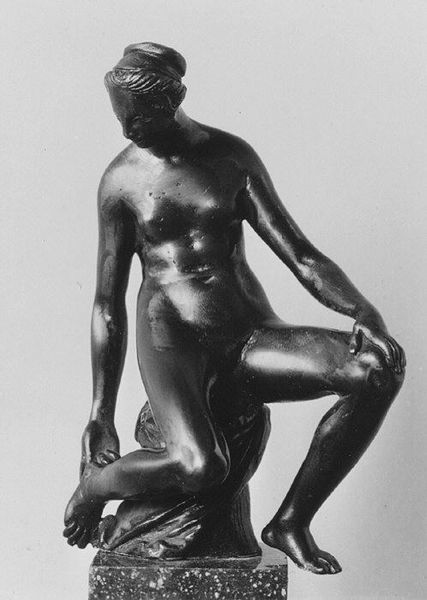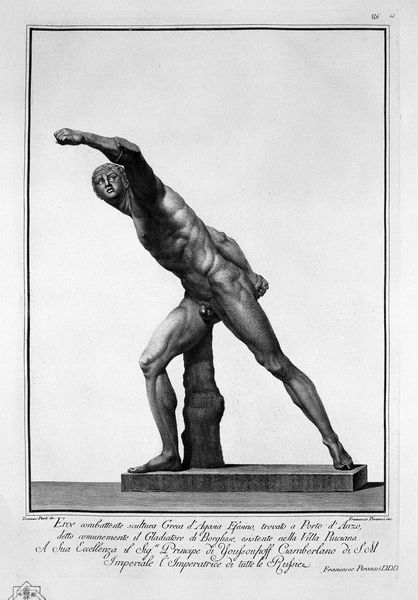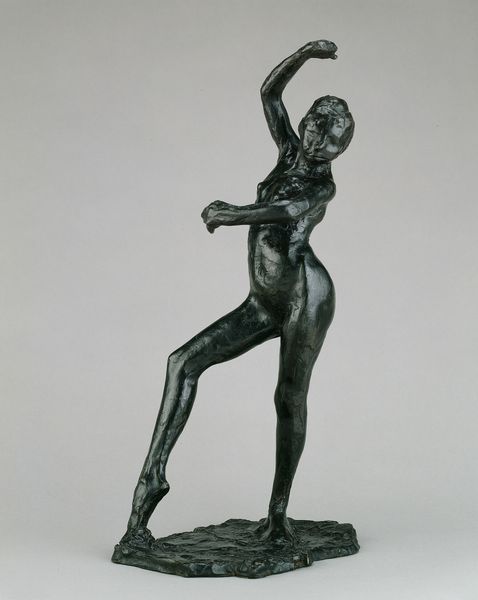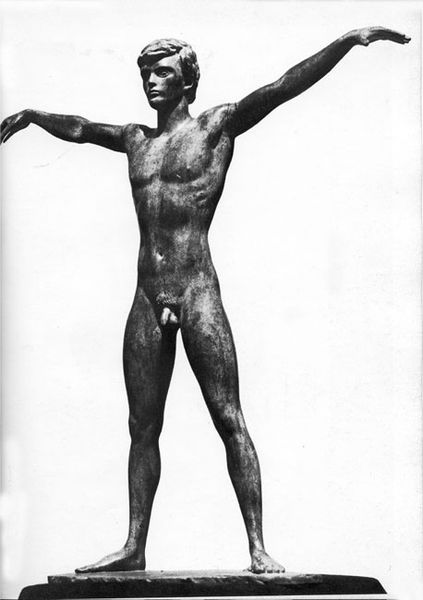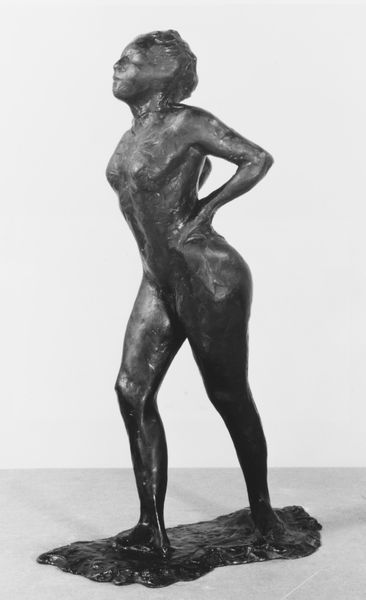
bronze, sculpture
#
art-nouveau
#
impressionism
#
sculpture
#
bronze
#
figuration
#
sculpture
#
black and white
#
academic-art
#
decorative-art
#
nude
#
realism
Dimensions: Overall: 17 1/4 × 23 3/4 × 11 5/8 in. (43.8 × 60.3 × 29.5 cm)
Copyright: Public Domain
Curator: What strikes me immediately is the figure’s strength—not in a bulging muscles sense, but a grounded power, balanced and intentional. Editor: Indeed. The bronze sculpture, "First Arabesque" by Edgar Degas, dating roughly from 1850 to 1920, presents a fascinating study in motion, particularly the codified gestures of ballet. It begs us to consider whose stories get immortalized in bronze, and the gazes through which they're interpreted. Curator: Right. Consider how the arabesque is such a revered pose, embodying aspiration and ethereal beauty. The symbol of the dancer’s form here really emphasizes control, precision. You see that in her extended limbs. Is this reverence a reflection of its power in the 19th century? Or is Degas attempting to disrupt these conventional ideals? Editor: Well, as Impressionism challenged academic painting norms, this bronze suggests a broader negotiation. While appearing classical on the surface with the dancer in the nude, this subject—a ballet dancer, someone from a lower socio-economic background—allowed him to depict modern life in an evolving Paris. This tension of beauty and labor feels incredibly relevant when assessing gendered body expectations today. Curator: You can see, for example, how she leans so dramatically forward, poised and controlled. It makes me think of ritual gestures in various traditions, moments that can both transport the practitioner and bind the community. How might her positioning here offer a symbol of hope? Editor: It's less of hope for me, and more about capturing a certain raw struggle. These were often young women of lower classes who were economically vulnerable, even exploited. It speaks volumes about the limited choices afforded to them, and the performances expected from them under constant surveillance. Degas often placed himself among ballet patrons from wealthy backgrounds, raising questions about spectatorship and the dynamics of power at play here. Curator: This piece really leaves you reflecting on the beauty in fragility, strength through vulnerability. Thank you for that illuminating reading. Editor: My pleasure. Examining the context is essential for acknowledging art's role within broader societal discourses. Hopefully, this pushes all of us to seek more voices, narratives, and bodies represented in these cultural spaces.
Comments
No comments
Be the first to comment and join the conversation on the ultimate creative platform.




